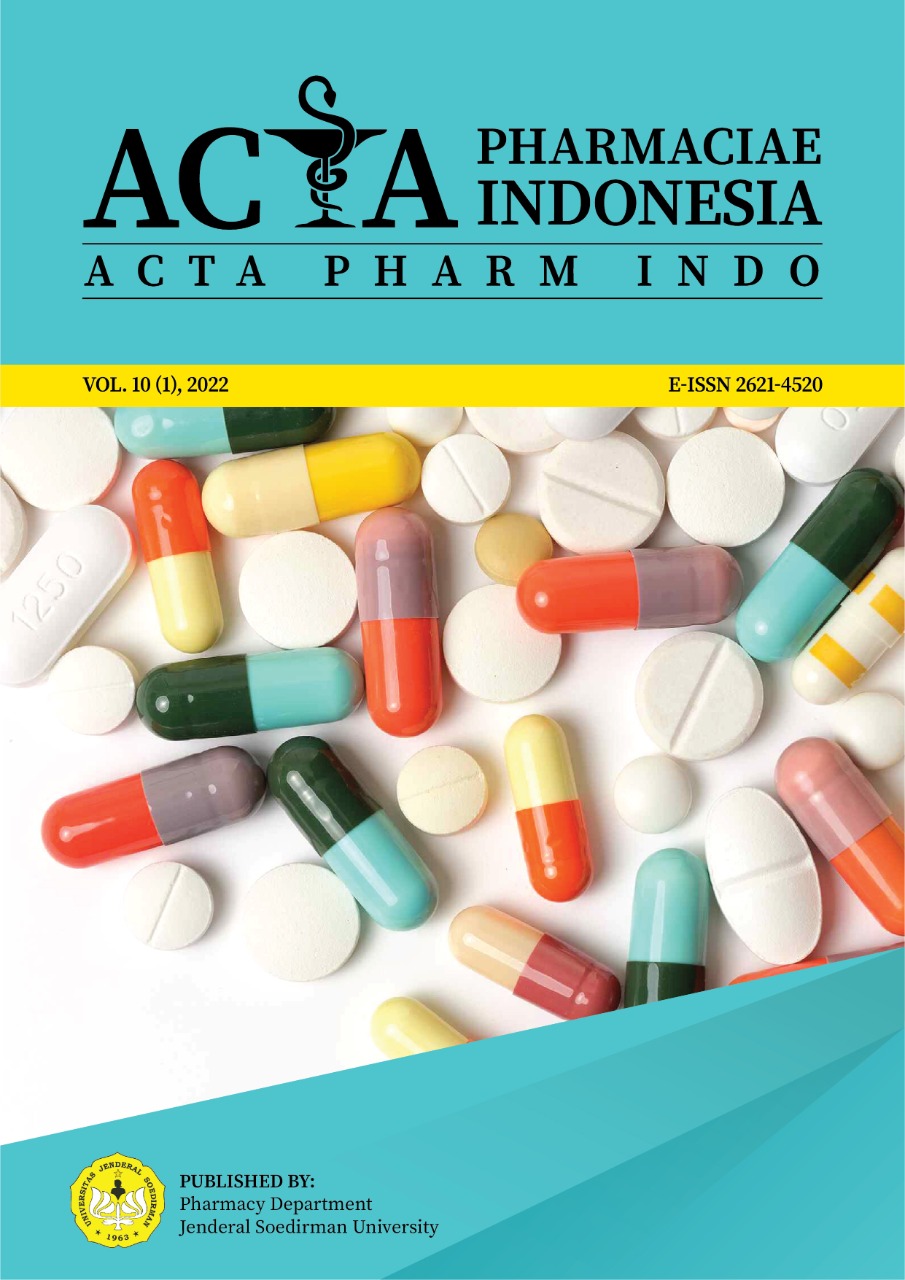The potential interaction between antiepileptic drugs and nutraceuticals used in pediatrics with epilepsy
Abstract
Background: The trend of using nutraceuticals in Indonesia increases every year. This study aims to describe nutraceuticals consumed in pediatrics with epilepsy as additional antiepileptic therapy and analyze their potential drug interactions.
Methods: This research was a cross-sectional study with total sampling method which was carried out in the period of June to July 2020. Inclusion criteria were children with epilepsy aged 0-17 years who were members of the Indonesian Epilepsy Community, had a doctor's diagnosis of epilepsy, received oral antiepileptic medication, and took nutraceutical products/food supplements. Data were analyzed descriptively based on data obtained through electronic data filling sheets and interviews.
Results: There were 106 participants from the Indonesian Epilepsy Community in total, with 14 children (13.2 %) using nutraceutical supplements. They were male (n=8; 57.1%), 2-12 years old (n=10; 71.4%), and good nutritional status (n=10; 71.4%). Most nutraceuticals consumed were dietary supplements containing vitamins (n=10; 71.4%). Of the eight potential drug interactions identified, 25% (n=2) were significant interactions, and 75% (n=6) were minor interactions. The potential for major interactions occurred in administering nutraceutical products containing vitamin D with the antiepileptic drug phenytoin and phenobarbital.
Conclusion: In this study, nutraceuticals and antiepileptic drugs had a little clinically meaningful interaction effect.











